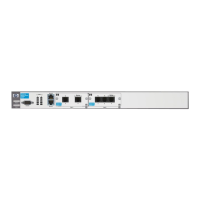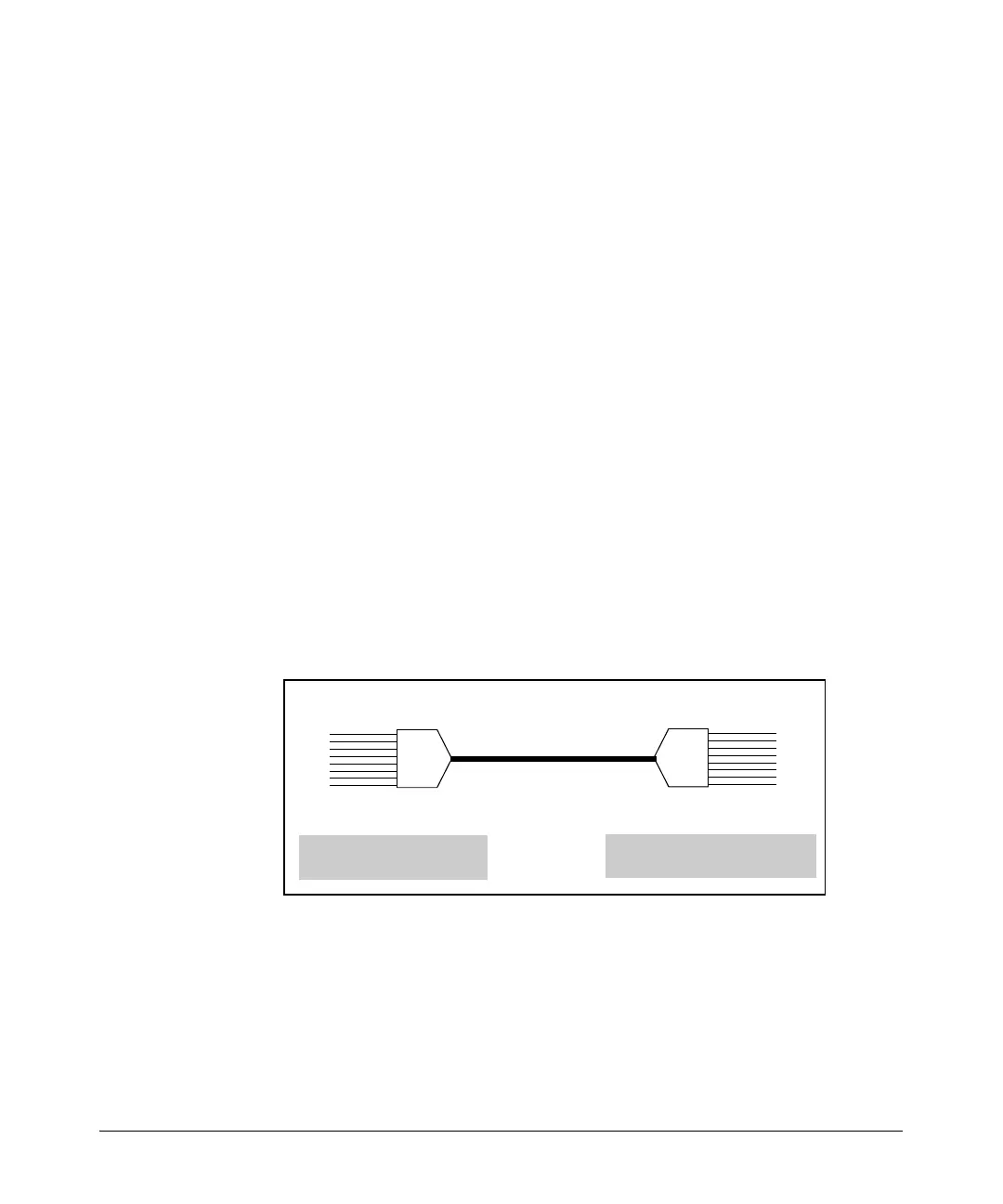4-13
Configuring E1 and T1 Interfaces
ProCurve Secure Router Modules
Again, the router context should indicate all of the interfaces you specified:
ProCurve(config-e1 3/2, 3/6, 3/8)#
To specify a range of contiguous interfaces and multiple noncontiguous T1
ports, enter:
ProCurve(config)# interface range t1 3/1-4, 3/6, 3/8
The settings that you must configure to establish an E1 or T1 WAN connection
are explained in the following sections.
Channels
As mentioned earlier, E1- and T1-carrier lines provide different transmission
speeds. An E1-carrier line provides 2.048 Mbps in total bandwidth, which is
divided into 32 channels. A T1-carrier line, on the other hand, provides 1.544
Mbps in total bandwidth, which is divided into 24 channels.
Called digital signal zero (DS0), each channel operates at 64 Kbps, the amount
of bandwidth required to transmit a single analog voice call through a digital
telecommunications network. The channels in these dedicated circuits are
created using time division multiplexing (TDM). By combining, or multiplex-
ing, multiple channels into a larger, more complex signal, TDM creates a high-
bandwidth channel. (See Figure 4-6.)
Figure 4-6. Multiplexing Multiple Channels into One E1- or T1-Carrier Line
Each channel receives an equal time slice within the complex signal in a
rotating, repeating sequence and thus receives an equal amount of bandwidth.
On the receiving end, TDM is used to recover the original signals through a
reverse process called demultiplexing.
MUX
MUX
32 or 24 DS0s
32 or 24 DS0s
DS0 channels
multiplexed into E1 or T1
E1 or T1 demultiplexed
into DS0 channels
E1- or T1-carrier line

